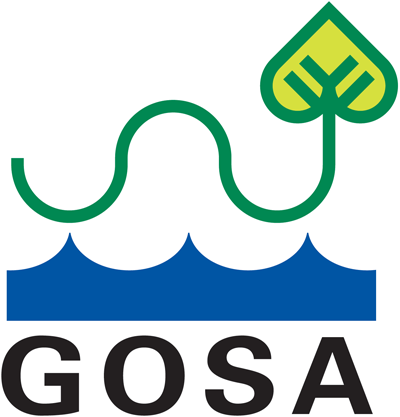Stewardship
GOSA performs stewardship activities on its 536 acres of property, and at Haley Farm State Park and the Candlewood Hill Wildlife Management Area. As an all-volunteer organization, GOSA contributes thousands of hours annually. Participation comes from members, businesses, and organizations which support community service.
Management plans provide for a balance between protection of the land and its usage for public enjoyment. GOSA’s collaborative stewardship program includes trail development and maintenance, habitat enhancement, and monitoring the land for damage by trespassing and other encroachments.
In some areas that have become overgrown with invasive non-native plants, we are actively working to restore a more natural mix of vegetation. Invasive species crowd out native plant species, and are detrimental to both wildlife and soil quality. GOSA’s primary means of removing and controlling invasive plants is mechanical, i.e., by repeated hand pulling, cutting and mowing. For some species, these techniques are not effective, and the selective use of herbicides is indicated. GOSA follows best management practices for invasive plant removal and seeks to minimize use of chemicals wherever possible. For more information, see the University of Connecticut’s “Connecticut Invasive Plant Working Group” at cipwg.uconn.edu.
General land management activities include:
– Mowing fields, grassy parking lots, and trails
– Invasive plant removal
– Trail work
– Remove obstructive growth, downed trees and branches
– Trail mapping
– Maintain trail markers and signs
– Construct and maintain bridges over wet areas
– Trash and debris removal
– Maintenance of tools and power equipment
– Monitor and mark boundaries
– Planting of native grasses, forbs, shrubs and trees
– Forestry management
Featured Habitat Projects
The Merritt Family Forest
- 2009-2011 USDA Natural Resource Conservation Service Wildlife Habitat Incentive Program (WHIP) $3,443.
- Removed invasive species to restore a 4 acre meadow habitat, planted grasses and forbs and created a 2 acre shrubby transition area. This had been a World War II Era Victory garden.
- 2014-2015 USDA NRCS Emergency Forest Restoration Program for Hurricane Sandy Damage $8479.
- Cleaned up downed and dangerous trees and constructed habitat piles based on provisions of the contract and planted native shrubs and trees.
Sheep Farm
- 2001-2015 USDA NRCS WHIP Grant $37,118
- Established a 2.5 acre early successional forest habitat, planted grasses and forbs to restore disturbed areas from building demolition. Removed invasive plants, restoring 5 acres of meadows and seeded with native grasses and forbs.
- 2014-2015 USDA NRCS Emergency Forest Restoration Program for Hurricane Sandy Damage $7,979
- Cleaned up downed and dangerous trees and constructed habitat piles based on provisions of the contract and planted native shrubs and trees.
- Removal of 8 buildings including fuel tanks; restored disturbed areas from building areas, restored 5 acres of meadows, seeded with native grasses & forbs.
- Constructed a wooden bridge over Fort Hill Brook.
Candlewood Ridge
- 2014-2015 USDA NRCS WHIP Grant $26,719
- Cleared 13 acres for early successional forest habitat.
- 2013-2016 National Fish and Wildlife Foundation: Early Successional Habitat for New England Cottontail under provisions of the LI Sound Futures Fund (combined with Avery Farm below)
- Cleared 5 acres for early successional habitat, debris removal of 6 acre disturbed area, machine seeded grasses and forbs, hand planted over 1000 shrubs and trees, and hand watered for two growing seasons.
Avery Farm Nature Preserve
- 2013-2016 National Fish and Wildlife Foundation: Early Successional Habitat for New England Cottontail under provisions of the LI Sound Futures Fund $100,000; GOSA provided $90,000 worth of in-kind contributions of labor and materials.
- Cleared 13 acres for thicket and early successional forest habitat planted trees, forbs, and shrubs.
- Removed invasive plants from a 3 acre site, planted trees, shrubs and grasses.
- Cleared and marked trails over Haley Brook.
Haley Farm State Park
- GOSA was founded in 1967 to raise funds to “Save the Haley farm” After raising the funds ($350,000 in today’s dollars) for the lower 200 acres, the State, 32 years later paid the developer/owner of the upper 50+ acres. (featured in “Life Magazine” under “Battles Won” in July 4 1970 and again in August 8, 1970 issues.)
- GOSA has paid three generations of the Crowley family to cut the fields each spring since 1985.
- GOSA organizes Earth Day groups to pick up trash, remove invasive plants and clear stonewalls of invasive vines.
- GOSA has work parties to maintain trails, remove widow makers and storm debris.
Candlewood Hill Wildlife Management Area
- GOSA has signed an agreement with the State of CT to maintain trails, remove debris and perform other stewardship activities as required.
- GOSA raised funds to help state purchase the property and have a management agreement with them.
